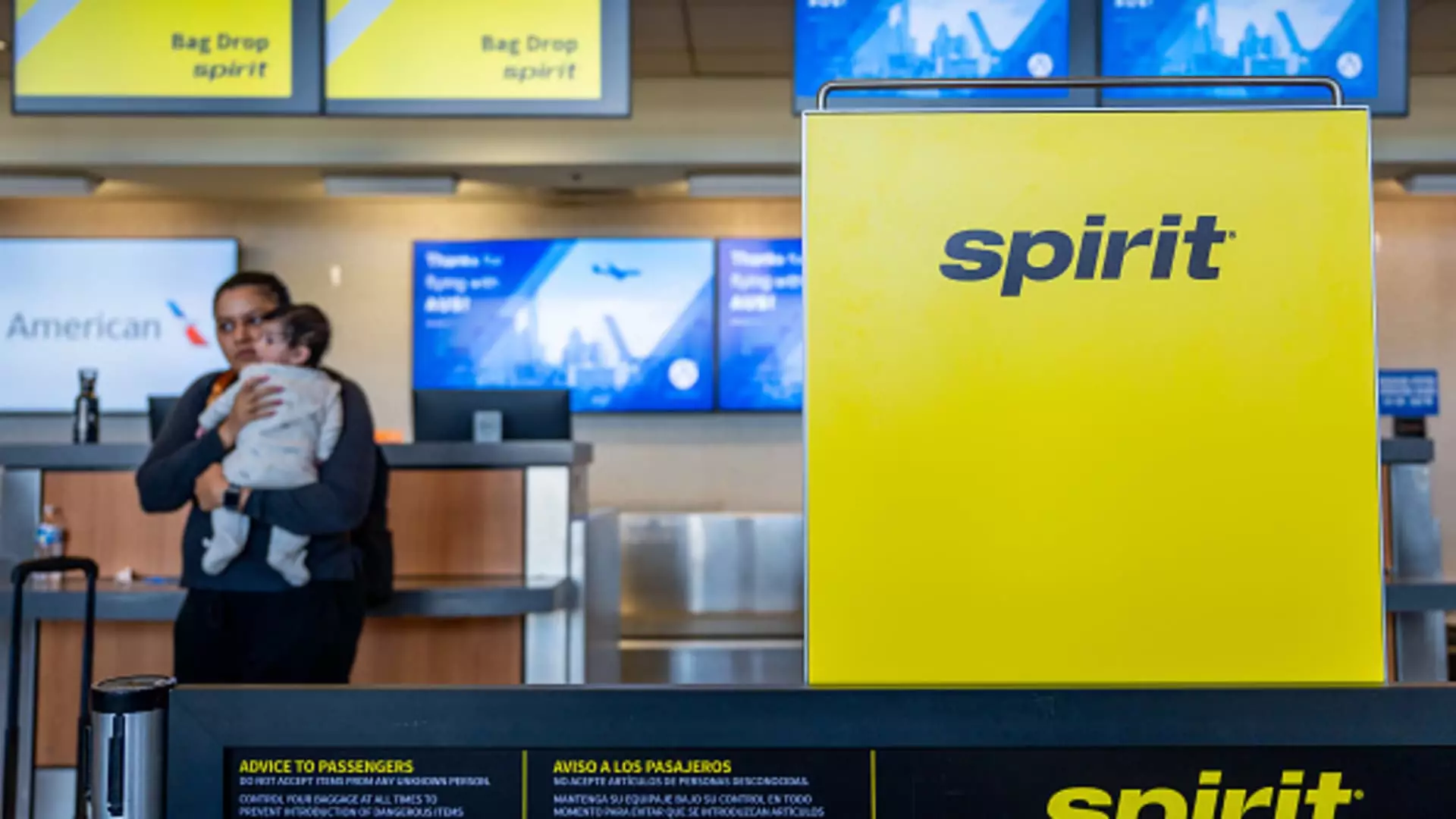Spirit Airlines has become the first major U.S. passenger airline to seek Chapter 11 bankruptcy protection in more than a decade, marking a significant moment in the aviation industry. Following the footsteps of American Airlines in 2011, Spirit’s decision to file for bankruptcy is driven by a need for restructuring rather than an indication of a service shutdown. This pivotal move is aimed at providing the airline with a crucial lifeline to stabilize its operations, effectively allowing it to reorganize its debts and continue to operate during a tumultuous time.
CEO Ted Christie has publicly reassured customers that booking flights and utilizing loyalty points will remain unchanged. While the announcement may have raised concerns among passengers, the communication reflects a focus on maintaining customer trust amidst financial challenges.
Spirit’s financial troubles predate the pandemic, deteriorating since 2019 and exacerbated by extensive operational disruptions caused by the COVID-19 outbreak. Rising operational costs, a grounded fleet of Airbus jets due to an engine recall, and a halted merger attempt with JetBlue has left the airline in a precarious position. Struggling to manage a substantial $1.1 billion debt repayment scheduled for the upcoming year further intensified the airline’s dilemmas.
The company’s mounting challenges highlight the vulnerability of budget carriers that relied heavily on tight profit margins and high passenger volumes. The pandemic-induced landscape has compelled many airlines, including Spirit, to reassess their business models and financial strategies.
Operational Continuity Amidst Restructuring
Despite the bankruptcy filing, Spirit Airlines emphasizes its commitment to maintain operational continuity. The reorganization plan, reportedly negotiated with major bondholders, aims for a streamlined approach that will allow Spirit to emerge from Chapter 11 by the first quarter of 2025. Observers note that during this restructuring period, customers should remain vigilant for potential schedule shifts, layoffs, or alterations in service that could impact travel plans.
The timing of the bankruptcy filing also seems strategically aligned with the peak holiday travel season, a time when airlines typically maximize revenue. Although Spirit intends to keep most of its schedule intact during this critical revenue-generating period, the looming possibility of service cuts weighs heavily on its future.
For passengers, understanding the implications of Spirit’s bankruptcy status is crucial. According to the U.S. Department of Transportation (DOT), travelers are entitled to refunds in the event of flight cancellations. However, the bankruptcy protection process could introduce complications, including possible temporary restrictions on issuing refunds until the airline stabilizes its financial footing.
In situations where Spirit refuses a refund after altering or canceling a flight, travelers may have recourse through their credit card companies, thanks to protections under the Fair Credit Billing Act. This emphasizes the importance of using credit cards for flight purchases, as they typically offer more robust consumer protection compared to debit cards or cash transactions.
Additionally, concerns about last-minute flight replacements arise due to potential price hikes and limited availability during high-demand periods. For those worried about cancellation risks, booking refundable tickets or considering travel insurance may serve as prudent measures, albeit costly ones.
The Path Forward and Potential Consolidations
Looking ahead, the path for Spirit Airlines could lead to a leaner, more cost-effective operation post-bankruptcy. However, the restructuring phase may leave the airline open to asset acquisitions by competing low-cost carriers that are facing aircraft shortages. The competitive landscape of the airline industry may well see opportunities emerging from Spirit’s financial restructuring, as other airlines scavenge for valuable assets.
Previous merger talks with Frontier Airlines indicate a potential for future consolidations in the industry, which could reshape the competitive dynamics of low-cost carriers. As new political landscapes potentially favorable to airline mergers arise, the prospect of reinitiating discussions between Spirit and Frontier cannot be dismissed.
While Spirit’s Chapter 11 filing brings uncertainty and concern, it also opens a window for reorganization and renewal. Travelers should approach the next phase with awareness and adaptability, remaining informed of both opportunities and potential disruptions as the airline navigates its complex and evolving situation.


Leave a Reply